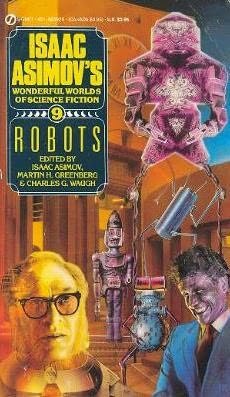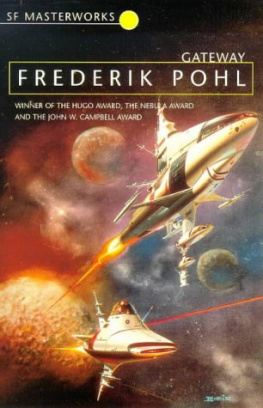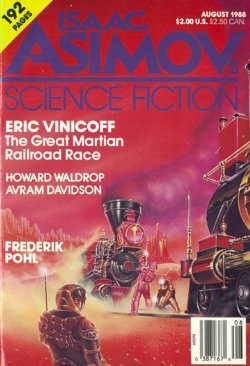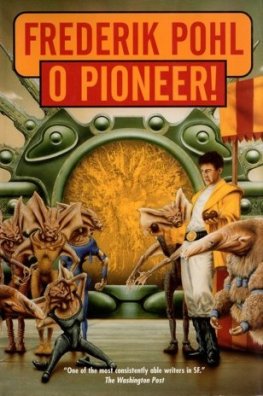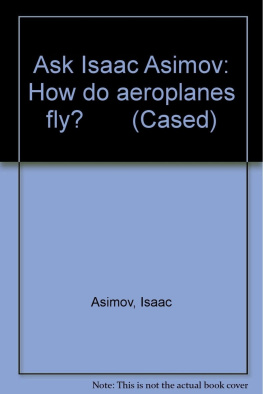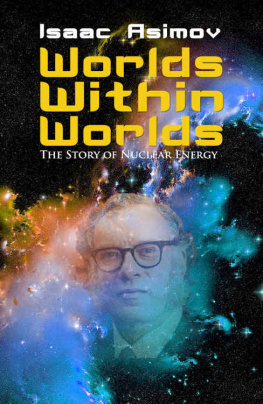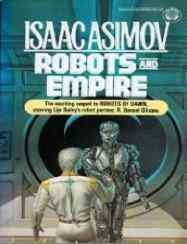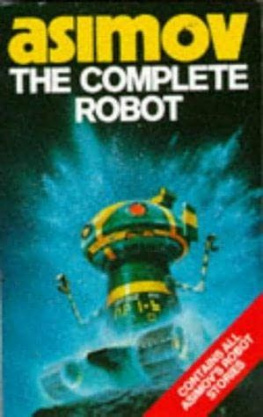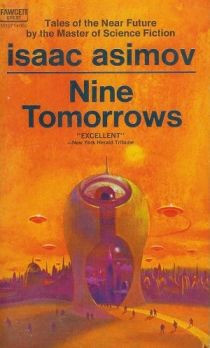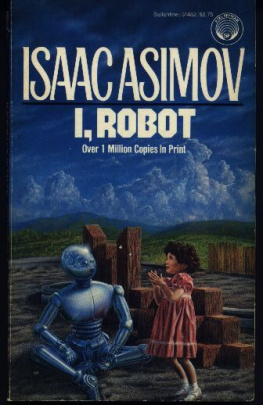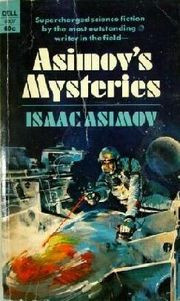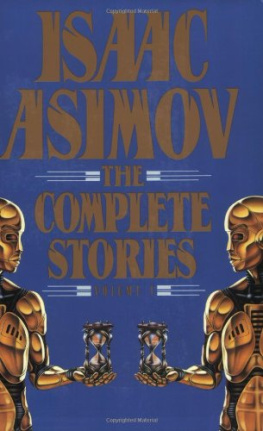Frederik Pohl - Isaac Asimov's Worlds of Science Fiction. Book 9: Robots
Here you can read online Frederik Pohl - Isaac Asimov's Worlds of Science Fiction. Book 9: Robots full text of the book (entire story) in english for free. Download pdf and epub, get meaning, cover and reviews about this ebook. year: 1989, publisher: Robinson Publishing, genre: Science fiction. Description of the work, (preface) as well as reviews are available. Best literature library LitArk.com created for fans of good reading and offers a wide selection of genres:
Romance novel
Science fiction
Adventure
Detective
Science
History
Home and family
Prose
Art
Politics
Computer
Non-fiction
Religion
Business
Children
Humor
Choose a favorite category and find really read worthwhile books. Enjoy immersion in the world of imagination, feel the emotions of the characters or learn something new for yourself, make an fascinating discovery.
- Book:Isaac Asimov's Worlds of Science Fiction. Book 9: Robots
- Author:
- Publisher:Robinson Publishing
- Genre:
- Year:1989
- ISBN:1-85487-041-6
- Rating:4 / 5
- Favourites:Add to favourites
- Your mark:
- 80
- 1
- 2
- 3
- 4
- 5
Isaac Asimov's Worlds of Science Fiction. Book 9: Robots: summary, description and annotation
We offer to read an annotation, description, summary or preface (depends on what the author of the book "Isaac Asimov's Worlds of Science Fiction. Book 9: Robots" wrote himself). If you haven't found the necessary information about the book — write in the comments, we will try to find it.
Isaac Asimov's Worlds of Science Fiction. Book 9: Robots — read online for free the complete book (whole text) full work
Below is the text of the book, divided by pages. System saving the place of the last page read, allows you to conveniently read the book "Isaac Asimov's Worlds of Science Fiction. Book 9: Robots" online for free, without having to search again every time where you left off. Put a bookmark, and you can go to the page where you finished reading at any time.
Font size:
Interval:
Bookmark:
Isaac Asimov's Wonderful Worlds of Science Fiction #9:
Robots
Introduction: Robots
Robots are not a modern concept. They are as old as pottery at the very least.
Once human beings learned to fashion objects out of clay and bake them hard-especially objects that looked like human beings-it was an easy conceptual leap to suppose that human beings themselves had been fashioned out of clay. Whereas ordinary lifeless statues and figurines needed nothing more than a human potter, the more miraculous human body, living and thinking, required a divine potter.
Thus, in the Bible, God is described as forming the first man, potter-wise, out of clay. "And the Lord God formed man of the dust of the ground, and breathed into his nostrils the breath of life; and man became a living soul." (Genesis 2:7)
In the Greek myths, it was Prometheus who fashioned the first human beings out of clay and water and Athena breathed life into them. No doubt one could go through the myths of many nations and find gods busily making little statues that became human beings.
What's more, the gods continued making living things or quasi-living things later on. With time, of course, human beings learned that clay was not the only building material, but that metals were superior, so that the divinely created beings came to be thought of as metallic in nature, and no longer as pottery.
In the eighteenth book of the Iliad, for instance, Hephaistos, the divine smith, is forging new armor for Achilles, and he is described as having "a couple of maids to support him. These are made of gold exactly like living girls; they have sense in their heads, they can speak and use their muscles, they can spin and weave and do their work." Hephaistos was also described as having formed a bronze giant, Talos, that served to guard the shores of Crete by walking around the island three times a day and repelling anyone trying to land.
Folk tales and legends of all nations tell of objects, usually considered inanimate, that through magic of one kind or another, achieve human or even superhuman intelligence. These can vary from the "golem," a giant made of clay, supposedly given magical life by a rabbi in sixteenth-century Bohemia, down to the magic mirror in "Snow White" who could tell "who is the fairest of them all." Various medieval scholars, such as Albertus Magnus, Roger Bacon, and Pope Sylvester II were supposed to have fashioned talking heads that gave them needed information.
Human beings, of course, tried to devise "automata" (singular "automaton"-from Greek words meaning "selfmoving") that would work through springs, levers, and compressed air rather than through magic, and give the illusion of possessing purpose and intelligence. Even among the ancients were those who possessed sufficient ingenuity who could make use of the primitive technologies of those days to construct such devices.
The breakthrough came, however, with the development of mechanical clocks in the thirteenth century. Clever technologists learned how to use "clockwork"-gears, wheels, springs, and so on-to produce not merely the regular motion of clock hands, but more complex motions that gave the illusion of life.
The golden age of automata came in the eighteenth century, when automata in the shape of soldiers, or tigers, or small figures on a stage could mimic various life-related behavior. Thus, Jacques de Vaucanson built a mechanical duck in 1738. It quacked, bathed, drank water, ate grain, seemed to digest it, and then eliminated it. It was all perfectly automatic, of course, and without volition or consciousness, but it amazed spectators. In 1774 Pierre Jacquet-Droz devised an automatic scribe, a mechanical boy whose clockwork mechanism caused it to dip a pen in ink and write a letter (always the same letter, to be sure.)
These were only toys, of course, but important ones. The principles of automata were applied to automatic machinery intended for useful purposes, which led to the invention of punched cards in 1801, which in turn set the feet of humanity on the path toward computers.
The Industrial Revolution, which had its beginnings as the golden age of automata came to an end, was therefore a continuation of the notion of the mechanical production of apparently purposive behavior. As machines grew more and more elaborate, the notion that human beings could eventually construct devices that had some modicum of human intelligence grew stronger.
In 1818 a book by Mary Shelley was published that was entitled Frankenstein and that dealt with the construction of a human body that was given life by its inventor. It was subtitled "The New Prometheus" and has been popular ever since its appearance. In the book, the created life-form (called "the Monster") took vengeance on being neglected' by killing Frankenstein and his family.
That is considered by some to have initiated modern "science fiction," in which the possibility of manufacturing "mechanical men" remained a frequently recurring subject.
In 1920 Karel Capek, a Czeck playwright, wrote R. U. R., a play in which automata were mass-produced by an Englishman named Rossum. The automata were meant to do the world's work and to make a better life for human beings. In the end, though, the automata rebelled, wiped out humanity, and started a new race of intelligent beings themselves. It was Frankenstein again on a much more grandiose scale.
R. U. R. stood for Rossum's Universal Robots. Rossum seems to be from a Czech word meaning "reason," while "robot" is from a Czech word meaning "slave." The popularity of the play threw the old term, "automaton," out of use. The expression "robot" replaced it in every language, so that now a robot is any artificial device (often metallic and often pictured in vaguely human form, though neither is absolutely necessary) that will perform functions ordinarily thought to be appropriate only for human beings.
In 1939 Isaac Asimov (that's me), who was only nineteen at the time, grew tired of science-fictional robots that were either unrealistically wicked or unrealistically noble, and began to write science-fiction tales in which robots were viewed merely as machines, built, as all machines are, with an attempt at adequate safeguards. In 1942 he formulated these safeguards into the "Three Laws of Robotics." Other writers adopted the laws, which introduced a useful rationalization into the concept of robots. They did not, however, unduly hamper those writers.
In this collection of modern stories about robots, you will find robots of all shapes and purposes, some of them, despite the Three Laws, being dedicated to war and destruction. Even a robot story of mine that is included involves robots built in the shape of automobiles, rather than men, and allows them to act with (deservedly) hostile intent.
In any case, enjoy.
Isaac Asimov
The Tunnel Under The World
by Frederik Pohl
On the morning of June 15th, Guy Burckhardt woke up screaming out of a dream.
It was more real than any dream he had ever had in his life. He could still hear and feel the sharp, ripping-metal explosion, the violent heave that had tossed him furiously out of bed, the searing wave of heat.
He sat up convulsively and stared, not believing what he saw, at the quiet room and the bright sunlight coming in the window.
He croaked, "Mary?"
His wife was not in the bed next to him. The covers were tumbled and awry, as though she had just left it, and the memory of the dream was so strong that instinctively he found himself searching the floor to see if the dream explosion had thrown her down.
But she wasn't there. Of course she wasn't, he told himself, looking at the familiar vanity and slipper chair, the uncracked window, the unbuckled wall. It had only been a dream.
Font size:
Interval:
Bookmark:
Similar books «Isaac Asimov's Worlds of Science Fiction. Book 9: Robots»
Look at similar books to Isaac Asimov's Worlds of Science Fiction. Book 9: Robots. We have selected literature similar in name and meaning in the hope of providing readers with more options to find new, interesting, not yet read works.
Discussion, reviews of the book Isaac Asimov's Worlds of Science Fiction. Book 9: Robots and just readers' own opinions. Leave your comments, write what you think about the work, its meaning or the main characters. Specify what exactly you liked and what you didn't like, and why you think so.

